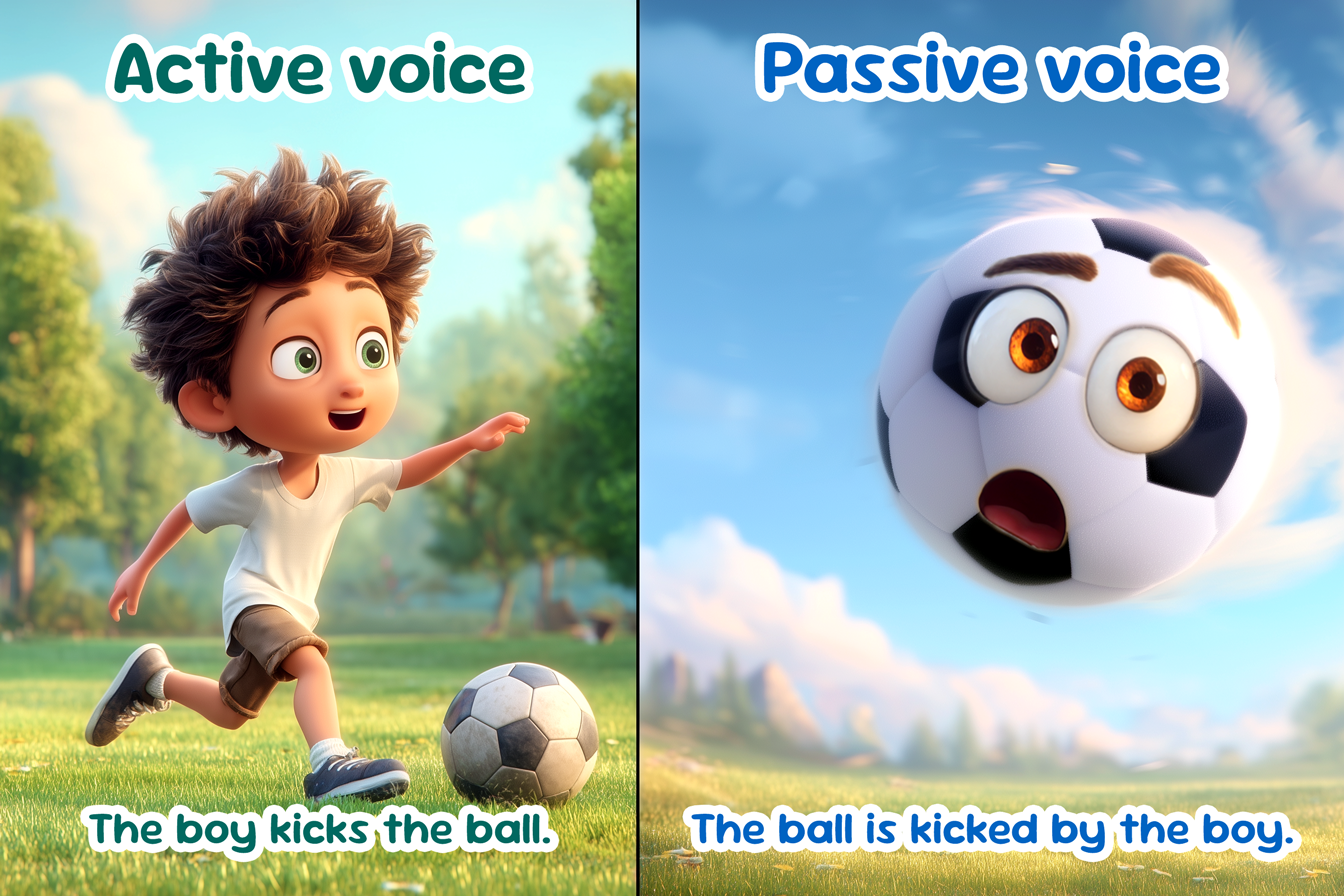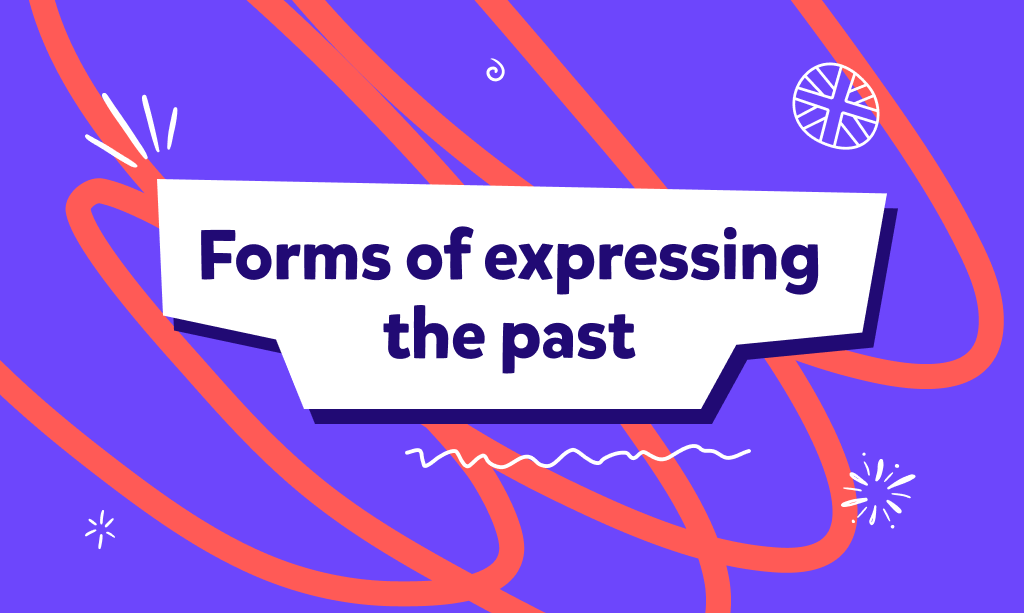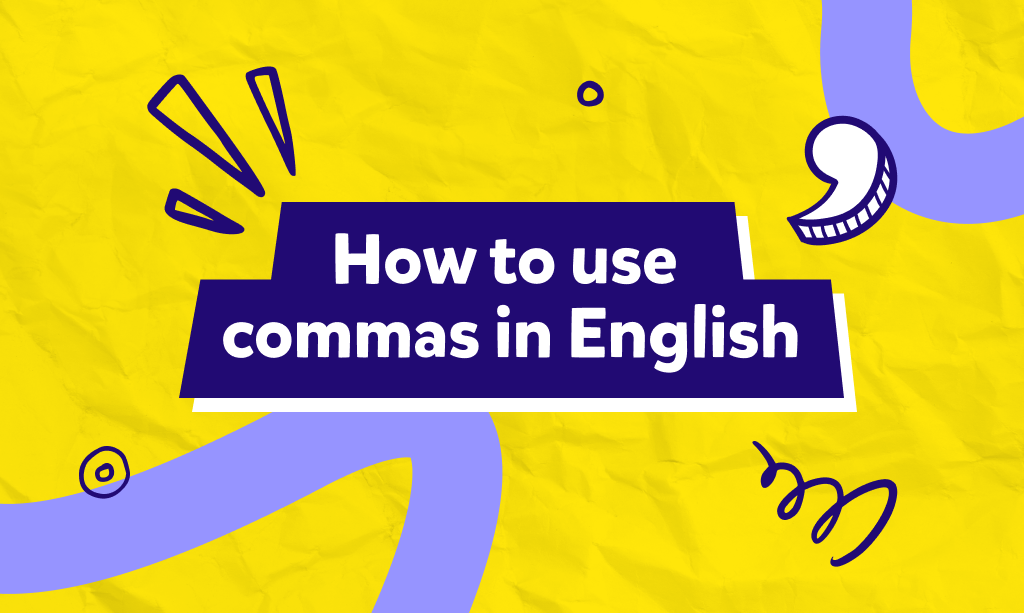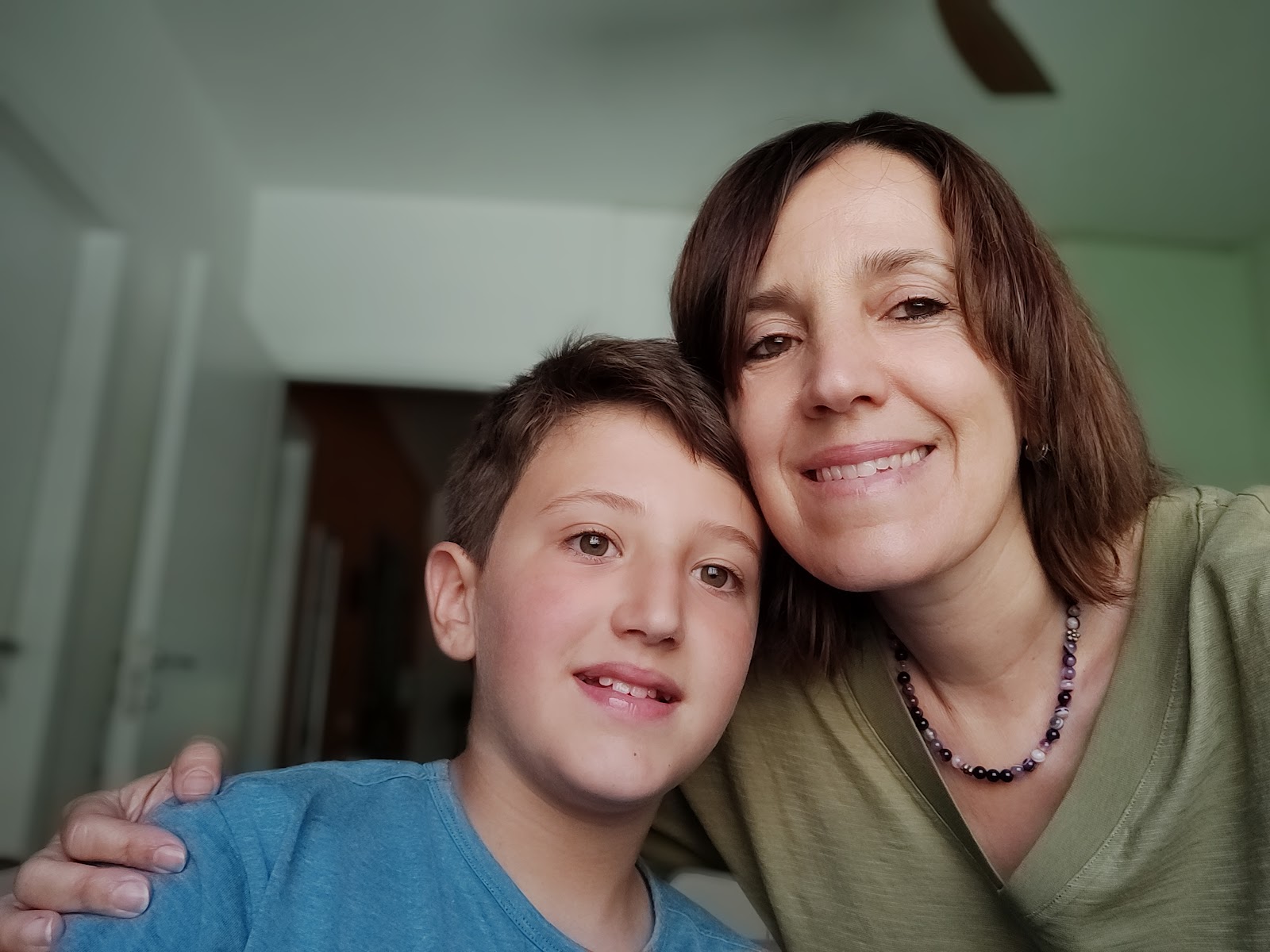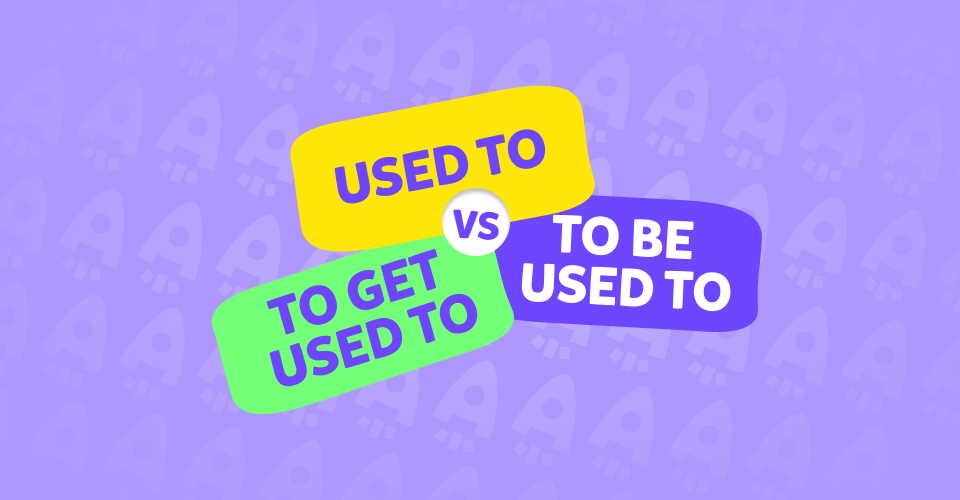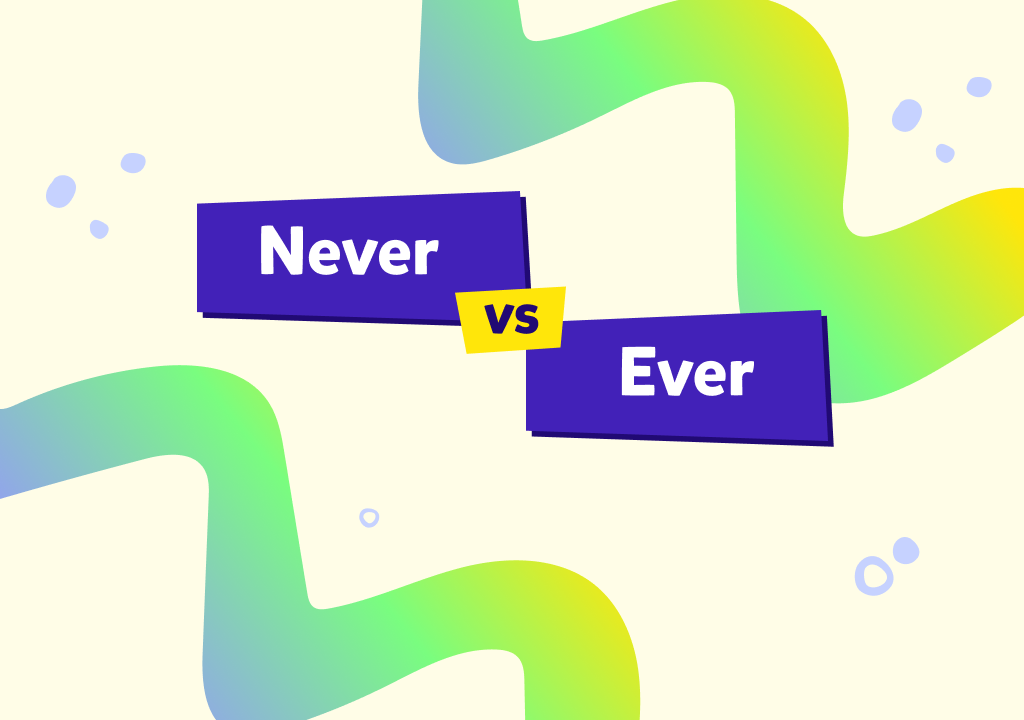- Passivo in inglese: che cos’è?
- Come si costruisce la forma passiva inglese
- Quando si usa la forma passiva in inglese
- Come trasformare una frase attiva in passiva
- Errori comuni da evitare nell'uso del passivo inglese
- Esercizi con la forma passiva inglese per bambini
- Perché insegnare la forma passiva in inglese presto
- La forma passiva sposta l’attenzione dall’autore dell’azione al risultato.
- Si costruisce con to be + participio passato e può essere usata al presente, passato e futuro.
- È utile quando il soggetto non è noto o non è importante, oppure in testi formali e scolastici.
- Gli errori più comuni: dimenticare to be, usare il participio sbagliato, confondere by con from.
- La passiva diventa importante già dai livelli A2-B1, per leggere e scrivere testi più complessi.
- Con esercizi e giochi interattivi, i bambini possono impararla in modo naturale e divertente.
Cosa hanno in comune frasi come ‘The cake was eaten’ e ‘The homework was done’? Entrambe usano la forma passiva. In questo articolo, scopriremo come si forma il passivo in inglese e quando va usato. Diventa importante impararla già dai livelli A2-B1. In questa fase gli studenti iniziano a leggere brani più complessi, prepararsi a esami come Cambridge Key (A2) o Preliminary (B1), e affrontare testi scolastici e giornalistici in cui la forma passiva è molto frequente. Capirla bene significa non solo sapere riconoscerla, ma anche riuscire a produrla quando serve, per esempio in una prova scritta o in una presentazione formale.
Se stai seguendo un corso di inglese per principianti questo articolo ti farà comodo senz’altro comodo per consolidare quello che hai imparato con il tuo insegnante. Lo ha scritto Novakid, scuola di inglese online per bambini che insegna a bambini e ragazzi dai 4 ai 12 anni in 50 paesi del mondo, con insegnanti madrelingua certificati.
Passivo in inglese: che cos’è?
Passive voice, active voice. Ti sarà capitato di incontrare queste parole. In inglese si usa il termine voice per mettere l’accento su chi compie l’azione o la subisce. Nella active voice il soggetto compie l’azione:
- Christopher Columbus discovered America in 1492 (Colombo ha scoperto l’America nel 1492). Qui il soggetto della frase è Cristoforo Colombo che compie l’azione di scoprire L’America.
Invece, nella passive voice l’attenzione si sposta sull’oggetto dell’azione, che diventa soggetto.
- America was discovered in 1492 (L’America è stata scoperta nel 1492). Qui il soggetto è l’America che “subisce” l’azione espressa dal verbo.
Nella seconda fase ci interessa parlare dell’America e di quando è stata scoperta. Nella prima frase, invece l’attenzione non è sull’America ma su Cristoforo Colombo.
Quindi: 👉le frasi passive spostano il focus dell’attenzione. L’elemento principale è chi subisce l’azione, non chi la compie. E infatti la forma passiva inglese mette questo elemento all’inizio della frase. Guarda anche l’immagine qui sotto:
Come si costruisce la forma passiva inglese
Il passivo inglese si forma con il verbo essere (to be ) e con il participio passato del verbo principale, secondo questo schema:
soggetto + to be + participio passato
👉English is spoken all over the world.
Naturalmente possiamo usare la forma passiva in diversi tempi verbali: al presente, al passato o al futuro. È il verbo to be che ci indica il tempo della frase, mentre il verbo principale resta sempre al participio passato.
👉 Per esempio:
- Present Simple → The door is opened every morning. (La porta viene aperta ogni mattina.)
- Past Simple → The door was opened yesterday. (La porta è stata aperta ieri.)
- Future Simple → The door will be opened tomorrow. (La porta sarà aperta domani.)
In questo modo è facile riconoscere il tempo della frase: basta guardare la forma del verbo to be.
Present Simple → is / are + participio passato
| Forma attiva | Forma passiva |
| They clean the house every day. | The house is cleaned every day. |
| People speak English everywhere. | English is spoken everywhere |
| She opens the shop at 9. | The shop is opened at 9. |
Past Simple → was / were + participio passato
| Forma attiva | Forma passiva |
| They cleaned the room yesterday. | The room was cleaned yesterday. |
| People watched the movie. | The movie was watched. |
| They built the bridge in 2005. | The bridge was built in 2005. |
Future Simple → will be + participio passato
| Forma attiva | Forma passiva |
| They will finish the project tomorrow. | The project will be finished tomorrow. |
| The teacher will correct the tests. | The tests will be corrected. |
| They will open the new shop soon. | The new shop will be opened soon. |
Quando si usa la forma passiva in inglese
La forma passiva i inglese si usa come in italiano. Vediamo i principali casi in cui usiamo la forma passiva invece della forma attiva.
Quando il soggetto non è importante o non è noto
Se non sappiamo chi ha compiuto l’azione, o non è rilevante specificarlo, la forma passiva è la scelta migliore.
- The window was broken. (La finestra è stata rotta.)
Non importa chi l’ha rotta, ma solo che adesso è rotta.
Quando vogliamo mettere enfasi sull’azione, non su chi la compie
Il passivo inglese permette di dare risalto all’azione o al suo risultato, piuttosto che al soggetto che la compie.
- English is spoken in many countries. (L’inglese è parlato in molti paesi.)
Qui non è importante dire da chi, ma il fatto che l’inglese sia una lingua diffusa.
Nei testi formali, scientifici o giornalistici
La forma passiva è molto comune in testi ufficiali, accademici e giornalistici, perché rende il discorso più impersonale e oggettivo.
- The experiment was conducted by a team of researchers. (L’esperimento è stato condotto da un gruppo di ricercatori.)
Questa costruzione è tipica nei report, nelle ricerche scientifiche e negli articoli.
L’uso del passivo richiede già una conoscenza dell’inglese. Nei corsi di inglese per bambini dai 10 anni di Novakid, la forma passiva viene introdotta gradualmente, così i ragazzi imparano a riconoscerla e usarla al momento giusto.
Come trasformare una frase attiva in passiva
Vediamo adesso come trasformare una frase attiva in una passiva. Osserva questo schema:
| Soggetto
(compie l’azione) |
verbo | Oggetto
(riceve l’azione) |
| The airline company | cancelled | my flight |
La compagnia aerea ha cancellato il volo. Se volessimo spostare il focus sul fatto (la cancellazione del volo) diremmo così:
| Soggetto
(riceve l’azione) |
verbo | Agente
(compie l’azione) |
| My flight | was cancelled | by the airline company |
Quindi nel passaggio dall’attivo al passivo succede che:
- Il complemento oggetto diventa >>> Soggetto
- Il verbo cambia in >>> to be + participio passato
- Il soggetto diventa >>> complemento d’agente / causa efficiente
Vediamo come si trasformano i diversi tempi verbali alla forma passiva in inglese.
| Tempo verbale | Frase attiva | Frase passiva |
| Present Simple | Mom makes a cake. | A cake is made by mom. |
| Past Simple | Dad washed the car yesterday. | The car was washed by dad yesterday. |
| Future Simple (will) | The teacher will give homework tomorrow. | Homework will be given by the teacher tomorrow. |
Altra cosa importante che noti dalla tabella: nella frase passiva, 👉la persona che compie l’azione viene introdotta con “by”.
- Mom makes a cake. → A cake is made by mom.
The car was washed by dad yesterday.
Homework will be given by the teacher tomorrow.
Errori comuni da evitare nell'uso del passivo inglese
Anche se la forma passiva non è difficile da costruire, ci sono alcuni errori molto comuni che gli studenti fanno. Un primo errore frequente è dimenticare il verbo be. Il verbo to be è fondamentale nella forma passiva: senza di lui la frase non è corretta.
- ❌ The cake eaten by mom.
- ✅ The cake is eaten by mom.
Un secondo errore è usare il participio sbagliato. La passiva richiede sempre il participio passato del verbo. Se si usa l’infinito o la forma base, la frase risulta scorretta.
- ❌ The car was wash yesterday.
- ✅ The car was washed yesterday.
Un terzo errore tipico per i parlanti italiani è usare la preposizione “from” invece di “by” per introdurre il complemento di agente.
- ❌ The cake was eaten from mom.
- ✅ The cake was eaten by mom.
Esercizi con la forma passiva inglese per bambini
Trasforma da attiva a passiva
1. Active (Present): The teacher explains the lesson.
- a) The lesson is explained by the teacher.
- b) The lesson are explained by the teacher.
2. Active (Past): Dad washed the car yesterday.
- a) The car was washed by dad yesterday.
- b) The car were washed by dad yesterday.
3. Active (Future): They will open the shop tomorrow.
- a) The shop will be opened by them tomorrow.
- b) The shop will opened by them tomorrow.
4. Active (Present): Mom cooks dinner every day.
- a) Dinner is cooked by mom every day.
- b) Dinner are cooked by mom every day.
5. Active (Past): The students wrote the test last week.
- a) The test was written by the students last week.
- b) The test were written by the students last week.
6. Active (Future): The company will send the email soon.
- a) The email will sent by the company soon.
- b) The email will be sent by the company soon.
7. Active (Present): People read newspapers every morning.
- a) Newspapers is read every morning.
- b) Newspapers are read every morning.
8. Active (Past): They built the house in 2005.
- a) The house was built in 2005.
- b) The house were built in 2005.
Soluzioni 
- a) The lesson is explained by the teacher.
- a) The car was washed by dad yesterday.
- a) The shop will be opened by them tomorrow.
- a) Dinner is cooked by mom every day.
- a) The test was written by the students last week.
- b) The email will be sent by the company soon.
- b) Newspapers are read every morning.
- a) The house was built in 2005.
Completa con il verbo corretto (Present Simple):
The homework ___ done every afternoon.
- a) are
- b) is
Apples ___ sold at the market.
- a) are
- b) is
The door ___ closed in the evening.
- a) is
- b) are
Toys ___ kept in the box.
- a) are
- b) is
English ___ spoken in many countries.
- a) is
- b) are
Soluzioni 
- b) is
- a) are
- a) is
- a) are
- a) is
Esercizi: Completa il dialogo (forma passiva)
1.
A: Why is the board clean?
B: It ___ (clean) by the teacher.
2.
A: Where are the toys?
B: They ___ (put) in the box.
3.
A: Where is the cake?
B: Yes, it ___ (eat) yesterday.
4.
A: When will the homework be ready?
B: It ___ (check) tomorrow.
Soluzioni 
1.
It was cleaned by the teacher.
2.
They were put in the box.
3.
It was eaten yesterday.
4.
It will be checked tomorrow.
Vuoi continuare a esercitarti? Qui trovi tantissimi esercizi sulla forma passiva in inglese. Il modo migliore per imparare a usare la forma passiva in inglese è parlare. Dai un’occhiata al nostro corso di conversazione Time2Talk Speaking Practice per esercitarsi con la forma passiva parlando in inglese con un insegnante madrelingua.
Perché insegnare la forma passiva in inglese presto
Imparare a usare e riconoscere la forma passiva in inglese è utile per riuscire a costruire frasi più complesse e a spostare l’attenzione sull’azione o sul risultato. È importante anche per capire testi scolastici e articoli, dove ricorre spesso.
Il passivo inglese si impara al livello A2/ B1, quando già si padroneggiano i tempi verbali e si ha un buon vocabolario. Nel nostro corso di inglese Virtual Explorer la forma passiva è integrata in lezioni interattive e divertenti, che permettono di visitare virtualmente alcuni dei luoghi più belli del mondo per poi discuterne con l’insegnante madrelingua.

































